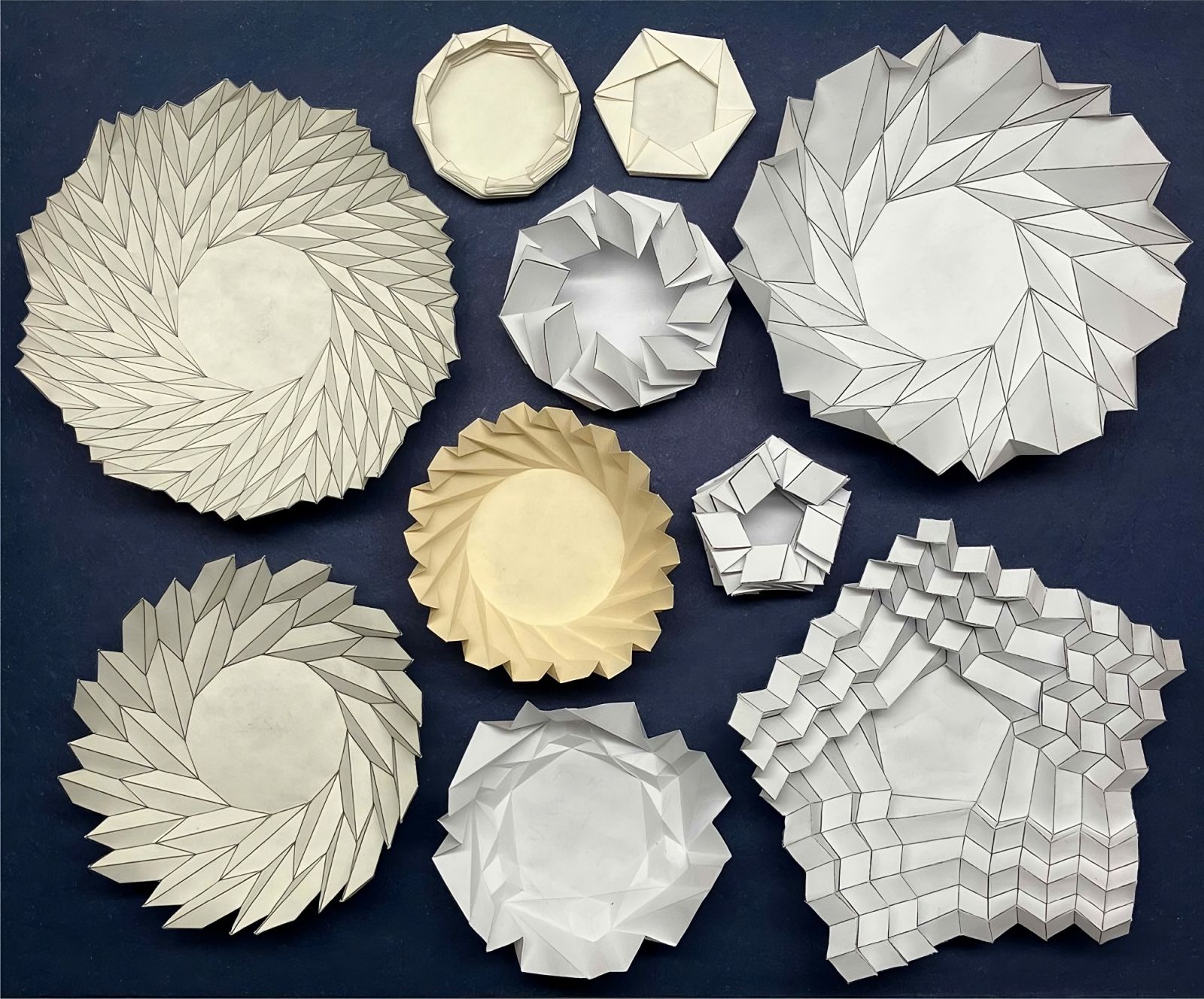🌸 Space structures that unfold like flowers: the future of exploration
Published by Adrien,
Source: Proceedings of the Royal Society A: Mathematical, Physical and Engineering Sciences
Other Languages: FR, DE, ES, PT
Source: Proceedings of the Royal Society A: Mathematical, Physical and Engineering Sciences
Other Languages: FR, DE, ES, PT
Follow us on Google News (click on ☆)
These structures fold flat like a thin disk and deploy in a single fluid motion to form a curved three-dimensional shape, reminiscent of flower petals opening. Unlike existing models, which are often difficult to refold, bloom patterns remain stable in the flat state and open reliably, reducing the risk of malfunction during critical space missions.

Examples of bloom patterns in different folded states.
Credit: Proceedings of the Royal Society A: Mathematical, Physical and Engineering Sciences (2025).
The team developed a mathematical model to understand how these patterns work, then built prototypes using paper and 3D-printed plastic. All models deployed without a hitch, demonstrating their potential for applications where reliability is paramount, such as space telescopes or solar panels. This approach combines geometric elegance and practical utility, paving the way for more efficient designs.
Origami techniques are thus being used to design antennas, telescope mirrors, and even habitats for future space colonies. These designs exploit geometric principles to ensure precise and error-free deployment, a necessity in the hostile environment of space.
Beyond space, these innovations could be used to create foldable temporary shelters, pop-up architecture, or expandable robotic components. The simplicity of deployment makes it a versatile solution, adaptable to various terrestrial situations. Bloom patterns illustrate how natural inspiration can lead to significant technological advances.
This research, published in the Proceedings of the Royal Society A: Mathematical, Physical and Engineering Sciences, serves as a foundation for future explorations. It encourages the discovery of new patterns and the study of their mechanical properties, promising interesting developments in the field of deployable systems.
Bloom patterns: a geometric innovation
Bloom patterns represent an advance in the family of origami structures, characterized by their ability to fold perfectly flat and deploy radially like a flower. This property, called "developability," ensures that the surface remains continuous without tearing during deployment.
Their design relies on mathematical equations that model folds and curvatures, making it possible to predict mechanical behavior. This facilitates the creation of virtual prototypes before physical manufacturing, speeding up the design process.
These patterns are particularly well-suited to thin and flexible materials, such as polymers or composites, used in aerospace. Their reliability makes them ideal for missions where redundancy is limited, such as interplanetary probes.